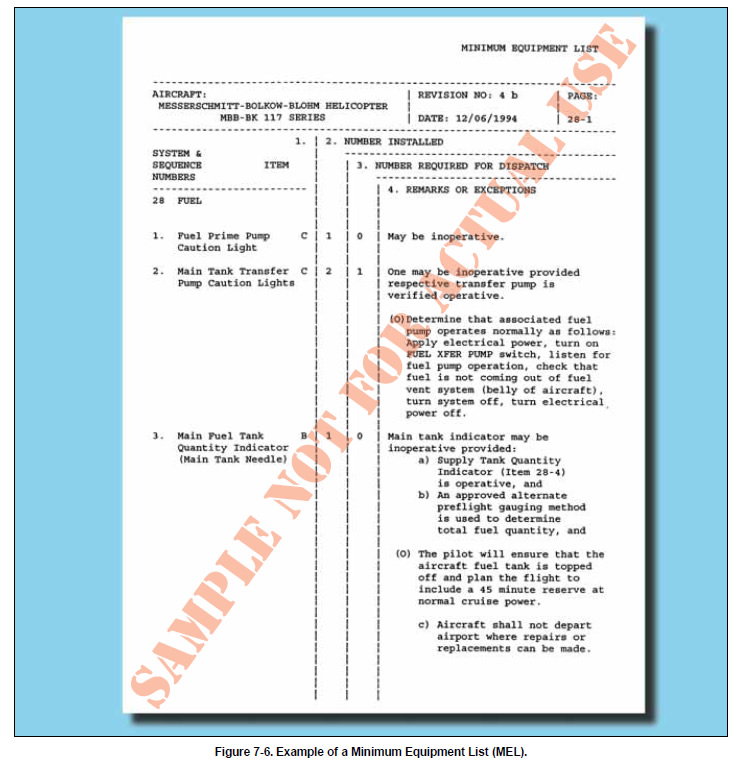MINIMUM EQUIPMENT LIST
A helicopter operating under Part 135 with certain
installed equipment inoperative is prohibited from taking
off unless the operation is authorized in the
approved MEL. The MEL provides for some equipment
to be inoperative if certain conditions are met
[Figure 7-6 on page 7-7]. In many cases, a helicopter
configured for single-pilot IFR may depart IFR with
certain equipment inoperative, provided a crew of two
pilots is used. Under Part 91, a pilot may defer certain
items without an MEL if those items are not required
by the type certificate, CFRs, or airworthiness directives
(ADs), and the flight can be performed safely
without them. If the item is disabled, or removed, or
marked inoperative, a logbook entry is made.

PILOT PROFICIENCY
Helicopters of the same make and model may have
variations in installed avionics that change the required
equipment or the level of augmentation for a particular
operation. The complexity of modern AFCS, AP, and
FD systems requires a high degree of understanding to
safely and efficiently control the helicopter in IFR
operations. Formal training in the use of these systems
is highly recommended for all pilots.
During flight operations, you must be aware of the
mode of operation of the augmentation system, and the
control logic and functions employed. For example,
during an ILS approach using a particular system in
the three-cue mode (lateral, vertical, and collective
cues), the flight director collective cue responds to
glide slope deviation, while the horizontal bar of the
“cross-pointer” responds to airspeed deviations. The
same system, while flying an ILS in the two-cue
mode, provides for the horizontal bar to respond to
glide slope deviations. This concern is particularly
significant when the crew consists of two pilots. Pilots
should establish a set of procedures and division of
responsibility for the control of flight
director/autopilot and FMS modes for the various
phases of flight. Not only is a full understanding of
the system modes essential in order to provide for a
high degree of accuracy in control of the helicopter, it
is the basis for identification of system failures
|
